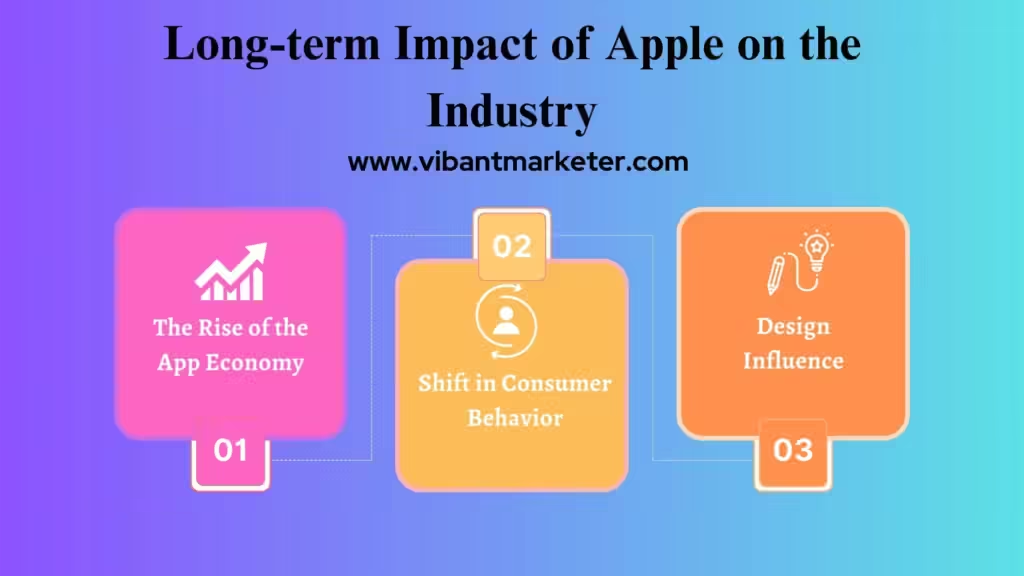
Case Study on Apple
Case Study: Apple's iPhone Launch (2007) - Revolutionizing the Smartphone Industry

Key Milestones
Announcement and Development
In a strategic move, Apple CEO Steve Jobs announced the iPhone in January 2007, building immense anticipation before its release in June the same year. The development process was shrouded in secrecy, with only select individuals at AT&T (Apple’s exclusive U.S. carrier) previewing the device.Launch Day
On June 29, 2007, the iPhone was officially launched. The initial pricing was $499 for a 4GB model and $599 for an 8GB model. Despite the high price, consumers lined up in droves to be among the first to own this revolutionary device.
Marketing Masterclass
 Apple’s iPhone launch is still studied as a masterclass in marketing. The key strategies included:
Apple’s iPhone launch is still studied as a masterclass in marketing. The key strategies included:
Buzz Generation
Steve Jobs’ keynote speeches, especially at Macworld 2007, generated massive hype. Media outlets picked up on every detail, ensuring the product remained in the spotlight for months before its release. Apple leveraged its strong media relationships to keep the iPhone in the headlines.Targeting Early Adopters
The initial target market was high-end consumers and tech enthusiasts. Apple’s strategy was to capture the interest of these influential groups to drive word-of-mouth marketing, which worked to perfection.Partnerships
Apple’s exclusive partnership with AT&T allowed it to maintain strict control over the product, further driving demand. AT&T offered the iPhone exclusively with a two-year contract, ensuring a steady stream of revenue for both companies.
Product Differentiation
 At launch, the iPhone had several unique features that set it apart from competitors like BlackBerry and Nokia:
At launch, the iPhone had several unique features that set it apart from competitors like BlackBerry and Nokia:
Touchscreen Interface
The 3.5-inch capacitive touchscreen was revolutionary at the time, eliminating the need for physical buttons and enabling users to interact with their phones in a completely new way.Convergence of Technology
By combining a music player, phone, and internet device, the iPhone became the first true “smartphone,” defining a new category of mobile devices.App Ecosystem
While the App Store didn’t launch until 2008, the iPhone was the first phone designed to have an app ecosystem, opening the door to third-party developers.
Impact on Apple's Business
Stock Price Surge
Apple’s stock price more than doubled from $85.64 in January 2007 to $179.40 by January 2008, driven largely by the success of the iPhone launch.Sales Milestones
Within 200 days of the launch, Apple sold 4 million iPhones. By the end of 2008, Apple had sold over 10 million units, exceeding expectations.Market Share
The iPhone quickly captured 19.5% of the global smartphone market by the end of 2007, making it one of the top-selling smartphones globally.
Challenges and Solutions
High Price and Customer Backlash
A few months after the launch, Apple reduced the iPhone price by $200, leading to an outcry from early adopters. Steve Jobs addressed this by offering a $100 store credit to those who had purchased the phone at the higher price. This move showcased Apple’s customer-centric approach, turning a potential PR disaster into an opportunity to reinforce loyalty.Carrier Exclusivity
The exclusive deal with AT&T limited potential customers who were tied to other carriers. Despite this, the demand for the iPhone remained strong, and Apple later expanded its carrier partnerships.
Long-term Impact on the Industry

- The Rise of the App Economy
In 2008, Apple introduced the App Store, forever changing how people interacted with their phones. The App Store opened the floodgates for developers to create mobile applications, giving birth to the modern app economy, which is projected to surpass $6 trillion by 2027. Shift in Consumer Behavior
The iPhone redefined consumer expectations. Phones were no longer just communication tools but became central to everyday life, offering entertainment, navigation, and internet browsing on the go.Design Influence
The iPhone’s minimalistic, touchscreen-driven design has been widely imitated by competitors. Today, nearly all smartphones follow the form factor established by the iPhone.
Data and Facts (2023 Update)
Global iPhone Sales (2007–2023)
Apple has sold over 2.2 billion iPhones globally since its launch in 2007, generating over $1.2 trillion in revenueRevenue Contribution
The iPhone remains Apple’s primary revenue driver, contributing approximately 52% of the company’s total revenue in 2022Evolution of Features
Modern iPhones feature OLED screens, multiple cameras with computational photography, and 5G connectivity, a far cry from the original 2G iPhone with a single camera and no App Store.
Conclusion: The impact of the iPhone on the smartphone industry
Through its strategic product design, marketing, and partnerships, Apple continues to lead the industry with each new iPhone iteration, demonstrating the lasting impact of the original launch.






